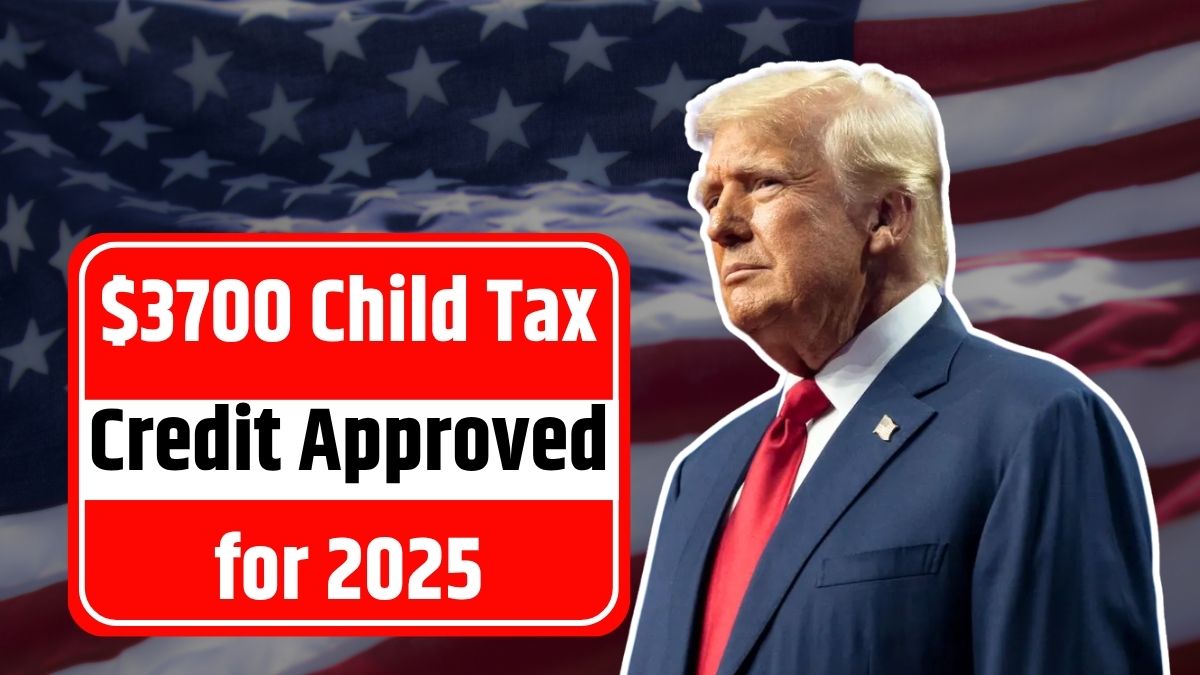In a landmark decision set to benefit millions of families, the U.S. government has increased the Child Tax Credit to $3,700 per child in 2025. This major revision is being called the most significant upgrade to the program in decades and is designed to offer financial stability, fight childhood poverty, and boost the long-term development of children across the country.
If you’re a parent or caregiver, this article explains how much you can receive, who qualifies, how and when payments will be issued, and the economic impact of this bold government initiative.
A Historic Boost to Child Tax Credit Benefits
The Child Tax Credit (CTC) has come a long way since its introduction in 1997, when the benefit stood at just $400 per child. Over the years, it gradually increased to $1,000, then $2,000 in 2017, and was temporarily raised to $3,600 during the COVID-19 pandemic.
Now, in 2025, the credit has been permanently raised to $3,700 for children under 6, and $3,000 for children aged 6–17. This change marks the first time such a significant and long-term investment is being made in children’s futures.
What’s New in the 2025 Child Tax Credit?
Several key enhancements have been introduced in the new 2025 Child Tax Credit policy:
- Base credit of $3,000 for children aged 6 to 17 years
- Additional $700 for children under age 6, totaling $3,700
- Partial advance payments through monthly or quarterly disbursements
- Refundable credit for low-income families, meaning even those with little or no tax liability can receive the full amount
These provisions aim to ensure that all qualifying families, especially those hit hardest by inflation, receive meaningful and consistent financial assistance.
Who Is Eligible for the $3,700 Child Tax Credit?
To qualify for the credit, both the child and the parent or guardian must meet specific eligibility criteria.
Child Eligibility Requirements
- Age: Must be under 18 years of age by the end of 2025
- Relationship: Can be your biological child, adopted child, stepchild, grandchild, or a close relative
- Residency: Must live with you for more than half the year
- Dependency: Must rely on you for financial support and cannot have significant income of their own
- Citizenship: Must be a U.S. citizen or lawful resident with a valid Social Security Number
Income Limits and Phase-Out Details
The full benefit is not available to everyone. The credit phases out above certain income levels:
- Single filers: $200,000
- Married couples filing jointly: $400,000
For every $1,000 earned above these limits, the credit is reduced by $50. This ensures that high-income families receive reduced or no benefits, while middle- and lower-income families receive the full amount.
How and When Will the Tax Credit Be Paid?
Families can choose how they would like to receive the Child Tax Credit in 2025:
Payment Options
- Lump sum: Full credit amount issued during tax filing season
- Monthly payments: Smaller payments spread out monthly
- Quarterly payments: Larger amounts issued every three months
Monthly and Quarterly Payment Breakdown
Here’s how the payments break down under the advance payment options:
For Children Under Age 6:
- Monthly: $154 per month
- Quarterly: $462 per quarter
For Children Aged 6–17:
- Monthly: $125 per month
- Quarterly: $375 per quarter
Advance payments will be reconciled with your final tax return, and any remaining credit will be refunded—or owed—depending on your situation.
How to Claim the 2025 Child Tax Credit
To ensure you receive the benefit, follow these steps:
- File your 2024 federal income tax return on time in early 2025
- Complete IRS Form 8812, which calculates your eligibility
- Choose your preferred payment method (lump sum, monthly, or quarterly)
- Provide up-to-date bank account information for direct deposit
If you received pandemic-era child tax payments in previous years, you must re-register—the new program does not automatically carry over.
Impact on Child Poverty and Family Finances
This updated credit is more than just a tax break. It’s expected to bring transformational change to families and the broader U.S. economy.
Poverty Reduction
Experts project the new Child Tax Credit could:
- Reduce child poverty by 20–25%
- Improve the economic condition of low-income families
- Benefit Black and Hispanic households significantly, who face higher poverty rates
Boost to Local Economies
With more disposable income, families are expected to:
- Spend more at local businesses and small shops
- Stimulate local job markets and contribute to community development
- Experience greater financial stability, allowing more adults to re-enter the workforce
Long-Term Benefits for Children
The enhanced credit will help improve:
- Access to nutritious food and healthcare
- Educational investments, such as school supplies and extracurriculars
- Overall development and quality of life for millions of children
Don’t Miss Out: Prepare Early
Parents and guardians are encouraged to prepare in advance to receive the credit smoothly:
- Gather necessary documents including proof of residency, SSNs, and tax documents
- Make sure your banking details are up to date with the IRS
- Decide which payment method (monthly, quarterly, or lump sum) best suits your financial needs
This program is not only a source of short-term relief—it is an investment in your child’s future.
FAQs
Q1. Who qualifies for the $3,700 Child Tax Credit in 2025?
A. Children under 18 who are U.S. citizens or legal residents, live with you more than half the year, and meet dependency rules.
Q2. How much will I receive per child?
A. $3,700 for children under age 6, and $3,000 for children aged 6–17.
Q3. Are there income limits?
A. Yes. The credit starts phasing out at $200,000 for single filers and $400,000 for joint filers.
Q4. How will I receive the payment?
A. You can choose monthly, quarterly, or lump sum payments when filing your taxes.
Q5. Do I need to reapply if I received the credit during the pandemic?
A. Yes. You must re-register for 2025, as previous records won’t carry over automatically.
